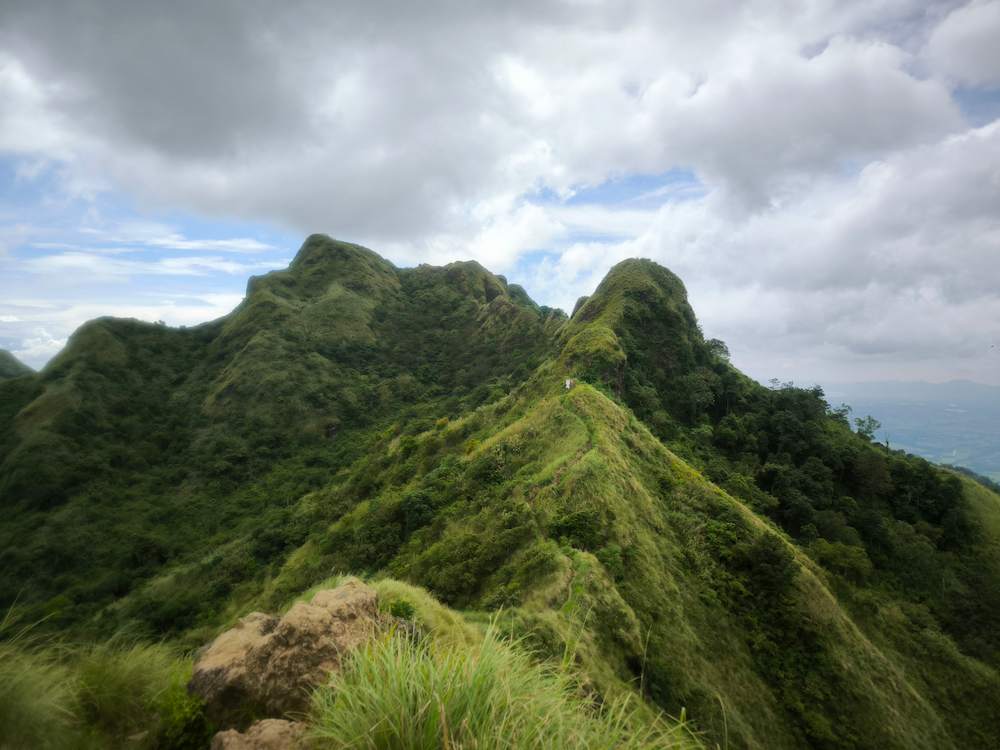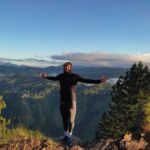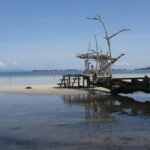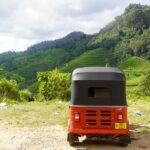Hike to Annapurna Base Camp
We felt a bit queasy when we decided to venture into the Annapurna region to hike to Annapurna Base Camp. We heard a lot about the trek. But can we really do it? And the whole thing without a guide? A decision we never regretted. Nevertheless, it was the first multi-day tour in the high mountains for both of us. The hike is one of the most popular on earth – and rightly so! The trek takes a total of 8 – 10 days. But the good thing is that even though the trek takes a few days, it is doable for people with a certain basic athleticism – at least we think so.
Everything important at a glance
Length: ~ 82 km
Duration: 8-10 days
Difficulty level: medium
Permits: ACAP and TIMS
Highest Point: Annapurna Base Camp (4.130 m)
Course of the hike
In general, we have to say that we were extremely lucky with the travel time, as we did the hike to the ABC at the beginning of March 2022. Due to Corona and the slow start of the hiking season, we hardly met any other hikers and were mostly alone or with another couple in the accommodation. This means that it will of course be much more crowded in the coming years/months and the booking situation and occupancy of the hostels will change significantly. The times given are for approximate orientation and show how long it took us. I would describe our walking pace as leisurely but steady. In each of the towns there are tea houses where you stay overnight. The ABC walk is also called the Apple Pie Trek because you can eat delicious apple pie everywhere along the way. If you think the trek to Annapurna Base Camp is too long for you or you want to try an easy trek first, we also have a tip for you! The trek to Kapuche Lake. This also starts from Pokhara. We have also dedicated a separate article to the trek to Kapuche Lake. If you are looking for the full “local experience”, then you should try the trek to Rara Lake. However, the journey and the hike are much more difficult than the trek to ABC.


How much does a trek to Annapurna Base Camp cost?
The trek to Annapurna Base Camp is also suitable for budget travellers. You can expect to pay around €150 for the trek in total. Depending on the supply/demand situation, you can get a place to sleep for free if you have breakfast and dinner at the Tea House. The prices for food are expensive by Nepalese standards, but very reasonable overall, considering that you don’t have to pay for accommodation.
| Output | Kosten |
| Permit + TIMS | 4.000 NPR (~ $ 30) |
| Overnight stay 8 x incl. meals | 8 x 1.200 NPR = ~ 10.000 NPR (~ $ 75) |
| 6 x lunch | 6 x 500 NPR = 3.000 NPR (~ $ 25) |
| 4 x Snickers | 4 x 100 NPR = 400 NPR (~ $ 3) |
| 4 x Snacks (nuts and crisps) | 4 x 125 = 500 NPR (~ $ 4) |
| 2 x Transport | 2 x 200 = 400 NPR ($ 3) |
| miscellaneous (Entrance fee Poon Hill, teas etc.) | 1000 NPR (~ $ 8) |
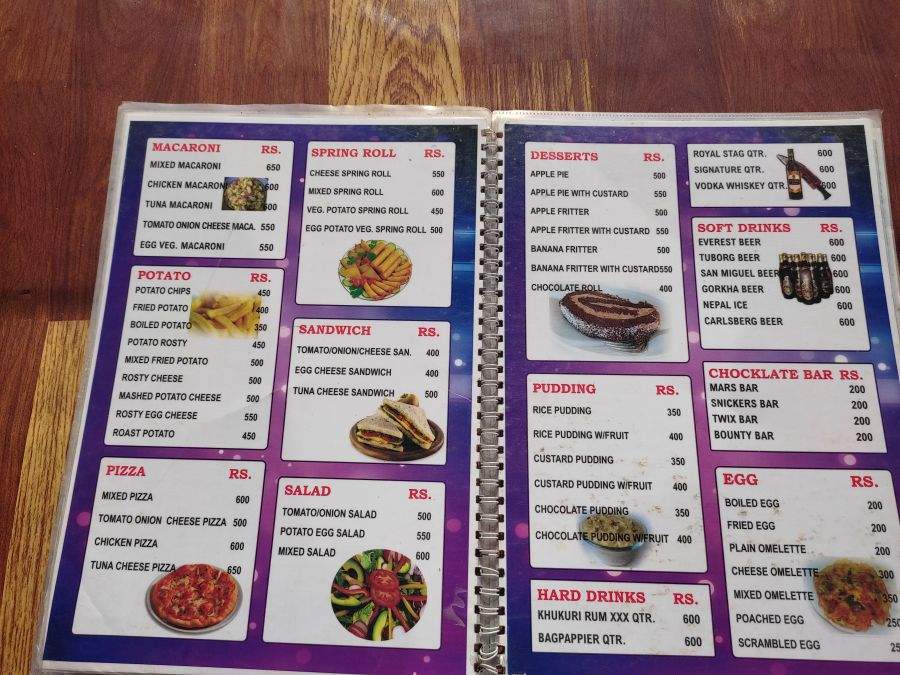
Day 1: Pokhara – Nayapul – Ulleri (~ 6 hours)
We get up early in the morning and go to Bishal Marg Chok to catch a bus to Nayapul. As soon as we arrive at the crossing, we find the right bus and get on. The bus ride takes about 2 hours and costs 200 NPR per person (1,50 €). Here you should insist on the price, as the “conductors” here probably like to pack something into their own pockets and raise the fare for tourists. Arrived in Nayapul, we start hiking until we reach Ulleri after about 7 hours. We pass small villages and enjoy the first views of the Annapurna massif. The last part of the hike is relatively strenuous. We have enough breaks along the way and eat something.
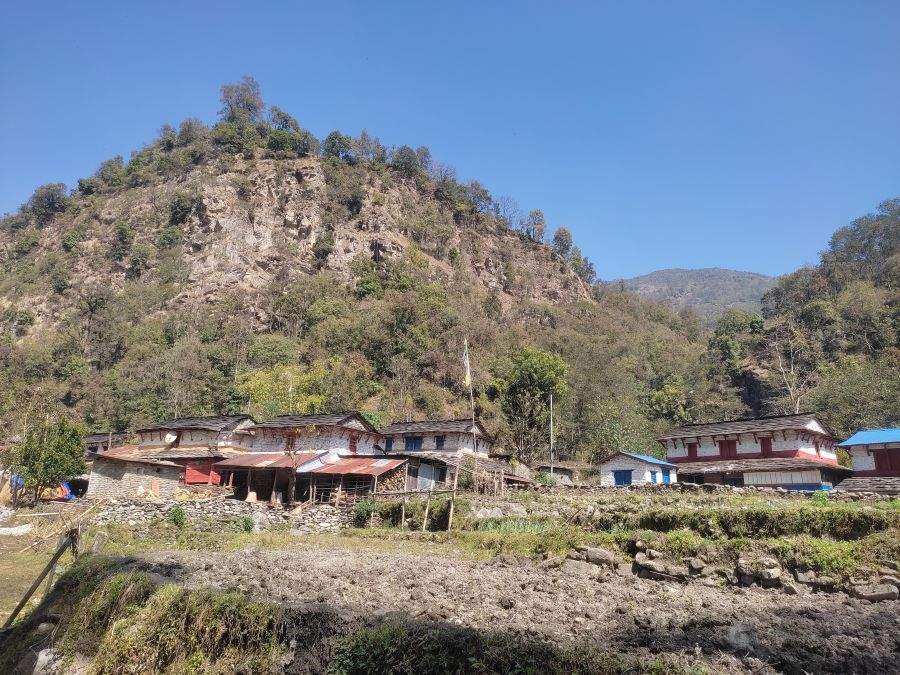
Day 2: Ulleri – Ghorepani (~4 hours)
The second day is one of the shortest hiking days we had on our entire trek. We took our time, took generous breaks and refreshed ourselves at water sources. The destination was Ghorepani, as the first highlight of our trek was on the agenda the next morning – the ascent to Poon Hill. Since it is best to climb it at sunrise, it was not an option to hike further in the afternoon.
Tip: The village of Ghorepani consists of a lower and an upper part: we recommend booking accommodation in the upper part, as you have a great view of the mountains in front of it.


Day 3: Ghorepani – Poon Hill – Thadapani – Sirpong (~8 hours)
On day 3 we get up at 5 am to start the one-hour climb to Poon Hill. The aim is to marvel at the sunrise from the “hill” at 3,200m. Apart from the great view, Poon Hill is also famous for the bright red flowering rhododendron trees – yes, trees! We know them from home mostly as shrubs.



Afterwards, the hike is mainly downhill. Here you should take special care to hike on the right path, as the signposting on the intermediate stage from Ghorepani to the start of the ABC trek is hardly signposted. It is best to have maps.me at hand for this. On this day, we unfortunately overdid it a bit and walked further than our bodies actually wanted us to. The typical stop would have been Thadapani, but we still felt relatively fit as it was all downhill and wanted to continue to Ghurjung, but we didn’t make it. So we spent the night in Sirpong at the British Ex Gorkha Guest House, which is not recommended. On the way through the forests, depending on the season, there can be icy and snowed-in passages. Mini spikes can be very helpful here.
Tip: If you hike further than Thadapani, you will find great tea houses behind the small village of Chuile with great views. One accommodation there looked like a small farm with a nice view terrace.

Day 4: Sirpong – Sinuwa (~ 6-7 hours)
With aching joints and sore muscles, we continued the next day. Since we had spent the night in Sirpong, we first went a little downhill before we faced one of the steeper sections to Ghurjung. After a few hours of running, we left the sore muscles and joint pain behind us for the most part. We continue through the somewhat larger village of Chhomrong, from where you can see our destination for today at the top of the mountain. That looks like a lot of effort! In Chhomrong our permits are checked and we continue. When we arrive in Upper Sinuwa, we move into our accommodation and call it a night.

Day 5: Sinuwa – Deurali (~ 6-7 hours)
The Annapurna Base Camp is slowly approaching! From Sinuwa we go via Bamboo, Dovan and Himalaya to Deurali. The section between Dovan and Himalaya was the most strenuous of the whole hike. Step by step we fight our way towards Himalaya and Deurali. When we arrived in Deurali, there is an upper and a lower part of the village. We chose the upper one because we wanted to save some of the way the next day and thought we would have a great view.
Tip: In Deurali, I would avoid the accommodation in the upper part of the village, as we found neither the food nor the view special. Moreover, there was no hot shower here and the owner unfortunately tried to cheat us and another couple.
Day 6: Deurali – Machapuchare Base Camp – Annapurna Base Camp (~ 4 hours)
We set off at 7:00 in the morning. Today is finally the day and we will reach the ABC. We walk through snow and through a valley surrounded by fantastically beautiful rock formations. Part of the path is closed because it is blocked by an avalanche, so we have to walk a little differently. We both imagined the path to be much more difficult and sweaty.

Break at Machapuchare Base Camp 

After about 2 hours we reach Machapuchhre Base Camp, where we have a short rest and a milk tea. Shortly afterwards we continue to the last and highest stage of the trek – Annapurna Base Camp. This section is also much less strenuous than expected. After another 2 hours we proudly reach the ABC sign and look for accommodation. There is not much choice anymore, as almost all accommodation is covered under a blanket of snow. The night gets very cold at barely – 15 °C without heating. Luckily there was nothing going on and we could wrap ourselves up in several blankets. The view and the atmosphere are simply breathtaking. Neither of us has ever seen anything like it. We are at 4,130 m and in the middle of the Himalayas.
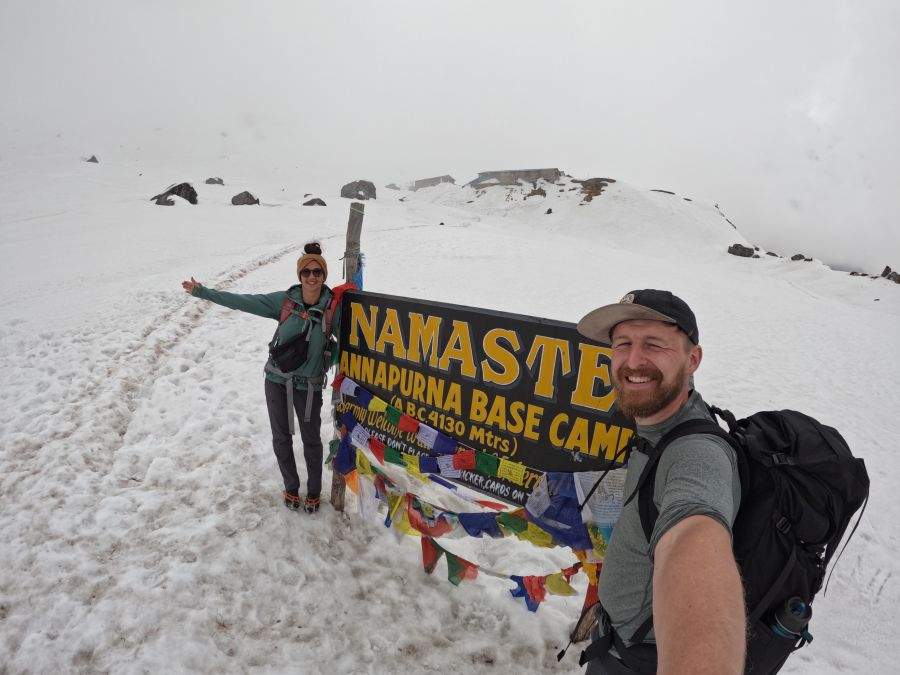
Tip: Hike as early in the morning as possible, as the hike in the snow becomes much more strenuous when it starts to melt because you keep sinking in.
Day 7: Annapurna Base Camp – Sinuwa (6 – 7 hours)
We get up at 6 in the morning to marvel at the sunrise. Now we have breakfast and off we go. From now on, the way back begins and we just try to get as far as possible, as we already know these stretches. We hike to Sinuwa and spend the night there.

Day 8: Sinuwa – Jhinu – Pokhara
We set off early in the morning as we were told there would be a bus from Jhinu to Pokhara at 9:00 and 12:00. So the plan was to get up early, take a relaxing bath in the hot springs of Jhinu and then take the bus back to Pokhara. Far from it! Arriving in Jhinu, we were told that the bus had already left at 9:00 and there was no other one. On the way we stopped in Chhomrong and had to show our permits again and chatted a bit longer with the gatekeeper. This was to be our salvation as it turned out later. Just when we were resigned to the fact that we would probably have to spend the night in Jhinu, he came by after work and asked us where we wanted to go. Fortunately, he wanted to go in the same direction and had another idea where a bus could leave. So we walked from Jhinu to Motkyu. There are hardly any tourists passing by here. They called the bus and after about 2 hours we were actually collected and came back to Pokhara after about 5 hours of driving.
Packing list for your trek to Annapurna Base Camp
Of course, our packing list does not claim to be complete. In any case, we packed far too much and could have left some of it in the accommodation. If you are thinking about buying your equipment cheaply in Nepal, we have a good tip for you. You can find everything in our article on buying trekking equipment in Nepal.
- Water! (If you have a filter bottle, there are ways to fill it up on the way).
- Snacks (we were glad of our Snickers and Neapolitans)
- 1x warm jacket (wind and rain proof)
- Offline map app (e.g. maps.me or mappy.cz)
- Headlamp or torch
- Camera
- Hiking boots
- 3x dry-fit shirts
- Mini spikes (depending on season)
- Sleeping bag, depending on season and availability of blankets (we didn’t have any with us and didn’t need any)
- Underwear
- 1x sports jumper
- 1x set of thermal underwear
- 1x pair of shorts for hiking
- 1x pair of trekking trousers (I wore a pair of cheap running trousers from Decathlon)
- if necessary rain trousers
- sun cream if necessary
Annapurna Base Camp on your own or with a tour?
We did the trek on our own and would do it the same way again. If you feel insecure, you are of course in good hands with a guide. We looked at the route beforehand and there are so many places along the way that we didn’t worry. Usually there is a place to stay every 2-3 hours at the latest, in case you are too exhausted.
Acclimatisation at Annapurna Basecamp
Fortunately, the way we planned the stage, we had hardly any problems with the altitude. However, this is also very type-dependent, so you should be careful here.
Accommodation on the Annapurna Base Camp Trek
Overnight stays are exclusively in so-called tea houses. These can be small, cute accommodations with a few rooms or multi-storey youth hostels. Most of the accommodation is equipped with hot showers, electricity and Wi-Fi. Depending on supply and demand, these things can come at a cost. Accommodation in each location usually has a standard menu, but the taste of the food varies greatly.
Arrival to the ABC Trek
The journey to your trek to Annapurna Base Camp is usually via Pokhara. Buses depart from the Pokhara Baglung Bus Park at regular intervals. The buses going to Baglung are the ones we have to take. You can either get on at the bus park itself or on the way at the Bishal Marg Chok level. The bus drivers can usually tell where you want to go from your hiking backpack.
Food during the Annapurna Base Camp Trek
The choice of different dishes is enormous. Besides the classic Dal Bhat, there are also many European dishes to choose from. We highly recommend Dal Bhat for 2 reasons:
– There is no biger energy donator (lentils, rice, potatoes and something spinach-like).
– You can have more as often as you like without having to pay more. That’s the way it is in Nepal.
Tip: Nepalese people swear on garlic soup when there are signs of altitude sickness. Naomi and other hikers ate it and got severe stomach cramps, so we would recommend not to eat it.
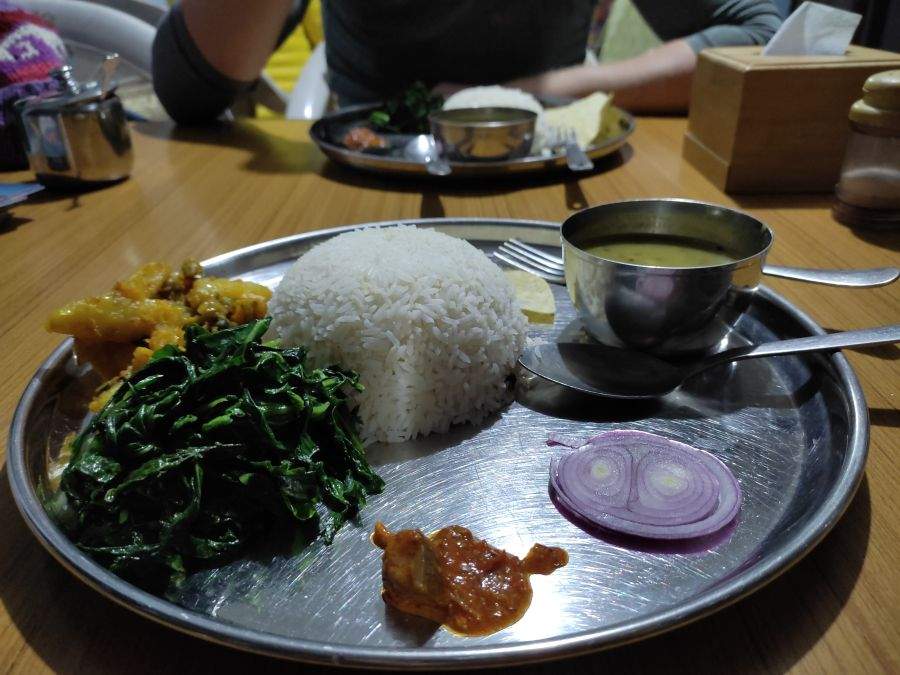
Buy Permits for Annapurna Base Camp
It is best to buy the permits in Pokhara at the relevant office. The ACAP (Annapurna Conservation area Project) permit costs 3,000 NPR (~ 25 €) and the TIMS ( Trekkers’ Information Management Systems ) card costs 2,000 NPR (~ 15 €). You should also check the opening hours of the office beforehand. Passport photos are required for the issuing of permits. These can either be taken free of charge on site or, if you want it to be quicker, you already have some with you.
Office hors Permit Office:
Mon, Tue, Wed, Thu, Fri, Sun: 10:00 am to 5:00 pm
Sat: 10:00 am to 12:00 noon
[WPSM_AC id=6810]




